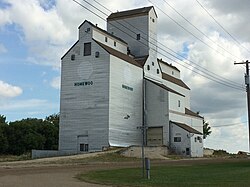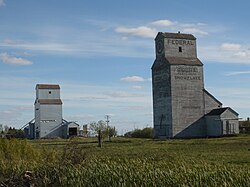 | |
| Industry | Agriculture |
|---|---|
| Founded | 1924 |
| Defunct | 1998 |
| Fate | Merged |
| Successor | Agricore, Agricore United, Viterra |
| Headquarters | Manitoba, Canada |
| Products | Grain buying |

Manitoba Pool Elevators was a grain trade company founded in 1924. It became a subsidiary of the Saskatchewan Wheat Pool until November 1932, when the Pool declared bankruptcy. In 1998 Alberta Wheat Pool and Manitoba Pool Elevators merged to form Agricore Cooperative Limited. In 2001, United Grain Growers combined its business operations with Agricore Cooperative Ltd. and carried on business as Agricore United, a publicly traded company, no longer a farmer-owned cooperative. In 2007, Agricore United was taken over by the Saskatchewan Wheat Pool, another publicly traded company. The merged corporation was renamed Viterra. [1]













